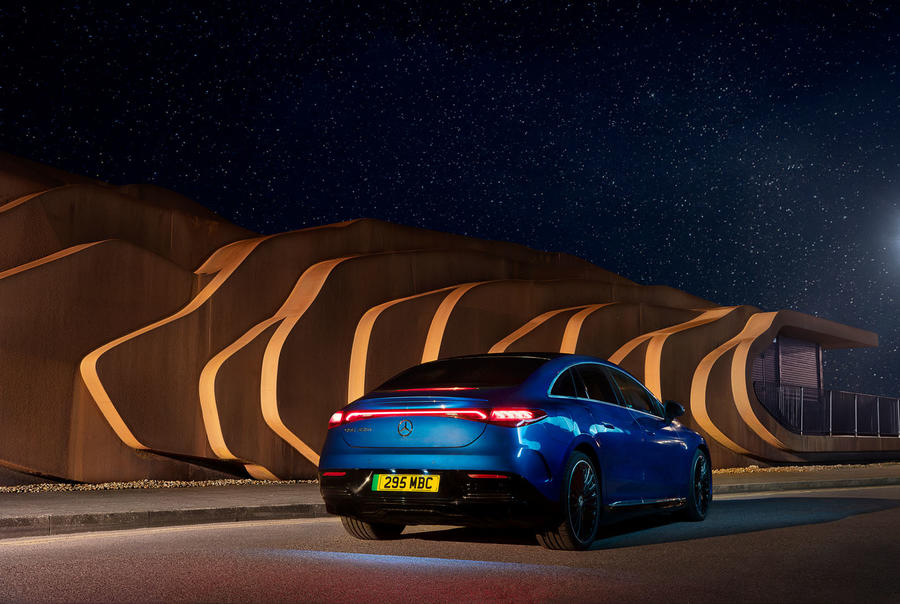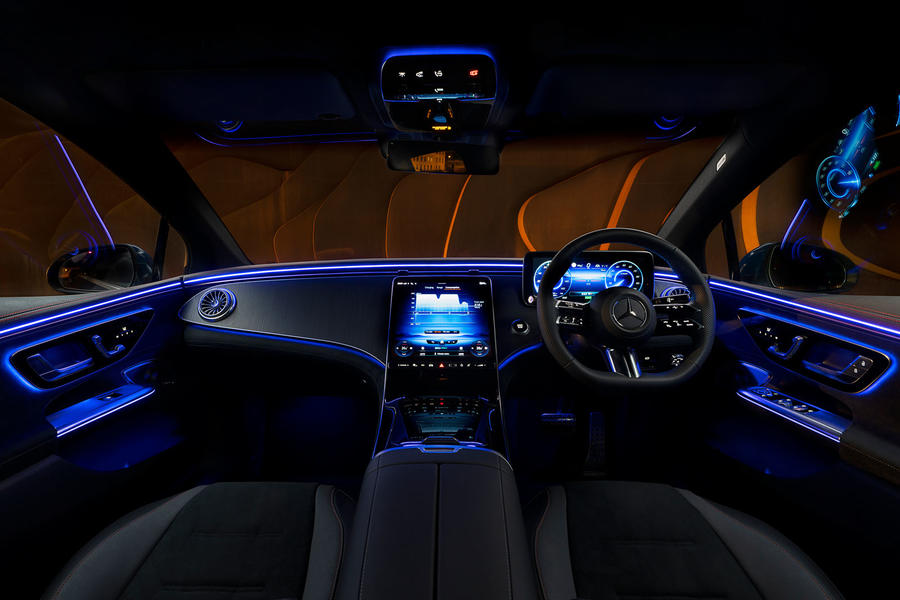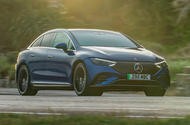Fresh-faced electric equivalent of the E-Class makes its British debut
How highly you rate the new Mercedes EQE is likely to depend on what it is that you want from your mid-ranking Benz saloon.
Traditionally, the role has been well defined and played dependably well by the Mercedes E-Class. The hallmarks are space, comfort and best-in-class isolation, all in an elegant but understated design and one with handling that, if not outright engaging, feels quietly thoroughbred. All in, a class act.
So to the EQE, which in terms of both style and technology is much the shrunk-down Mercedes EQS, and is tested here for the first time on British roads. What is there for the E-Class owner who wants to go electric?
Probably not an overwhelming sense of value for money. The entry- level, rear-driven EQE 300 offers roughly the same performance as the E200 but in like-for-like trim costs almost £30,000 more than its £45,000 petrol-engined peer. Mercedes claims the EQE and E-Class achieve similar profit margins, and it’s not hard to see why.

Then there’s the aesthetic. I can speak for only myself here, but Mercedes’ differentiation of its electric saloons from the ICE status quo has resulted in something a little formless. It probably won’t surprise you to know that the EQE is shorter, wider and taller than the loping E-Class. Sure, the nose is smart enough and the rear diffuser is purposeful, but altogether the car lacks personality, much like the very similar but slightly slipperier EQS.
The EQE starts to make its case as you drive it, but only in specific ways.
The big positive is ride quality, which for our EQE 350+ AMG Line test car, on 21in wheels, is fabulously serene. The suspension is modelled on that of the S-Class, with air springs all round, and it shows. Apart from the sharp shocks that few if any pneumatic systems deal with well, the EQE cruises down even rougher roads unperturbed and ghosts along motorways in restorative fashion. Speed bumps are insouciantly dispatched and no E-Class owner could ever complain about isolation. It’s church-quiet in here.
However, E-Classists might like a more pedigree (that is, lower and more supportive) driving position and a more substantial glasshouse. Because of its underfloor battery, the EQE often feels crossover-like from behind the wheel, and having an extremely high scuttle is never quite enough to disguise this.
Equally, the drawback of the towering windowlines and chunky false transmission tunnel is that the windows and windscreen look short and the cabin feels pokey, especially in the back, where occupants don’t benefit from the EQE’s shapely and lavish dashboard, which brings a GT-style ambience. Factor in the modest boot and the E-Class is not only a nicer place to sit for all but also more practical.
That said, I can see the appeal of the EQE for people who want to feel they’re ensconced within some high-tech fortress on wheels, sealed off from the dim and the grit of the outside world. Maybe too sealed off, mind – rearward visibility is surprisingly poor. In fact, even the new Ferrari 296 GTB does better in this respect, and for something as large and heavy as the EQE, that simply isn’t good enough.

Drivability is a mixed picture. The EQE’s handling is assured but not especially poised for a rear-driven saloon of generous wheelbase. Its strength lies in its refinement, not its engagement. The brakes’ biting point is also poorly defined, particularly for something weighing 2.3 tonnes, and performance is at best average for £73,450. The entry-level Porsche Taycan costs hardly any more yet sits in another universe as a driver’s car. Maybe the upcoming dual-motor AMG EQE 53 will do better, but don’t expect any wild transformation.
The EQE does have range on its side, though: you can expect more than 300 miles from its 90kWh battery, or perhaps even close to 400 miles on the kind of steady motorway drives at which this car excels.
Mercedes’ MBUX infotainment system is excellent, too, and I’ve no doubt that the EQE would be supremely easy to live with. Just know that it feels considerably less ‘car’ than the E-Class or even BMW’s electric i4. It’s much more luxury ‘conveyance’.
Source: Autocar
